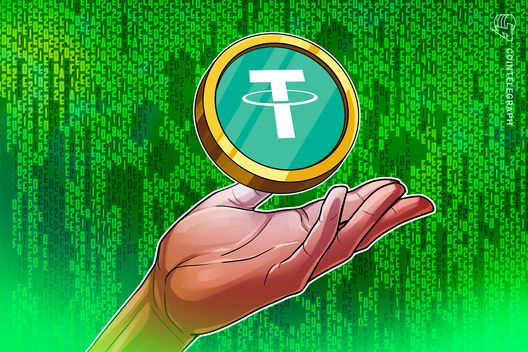

Tether, the company best known for its USDT stablecoin, is planning to open-source its Bitcoin Mining Operating System (MOS) in Q4 2025. This initiative, spearheaded by CEO Paolo Ardoino, aims to level the playing field for Bitcoin miners, fostering greater competition and network security. The move signifies Tether's commitment to decentralization and innovation within the Bitcoin ecosystem.
Ardoino announced the plan to open-source the MOS via a post on X, stating that the goal is to allow new and existing Bitcoin mining companies to compete without needing third-party software. The MOS is designed to be modular, supporting deployments ranging from small-scale Raspberry Pi setups to large industrial farms with the latest mining machines. The OS will also support plugin integration for miners and power devices, allowing users to create custom plugins tailored to specific hardware or site needs, fostering a collaborative development environment. Tether envisions integrating MOS with its internal data platform QVAC and artificial intelligence tools for performance optimization based on mining data.
A key feature of the open-source MOS is its modular plugin system. Developers can create and share custom plugins tailored to specific hardware or site needs, fostering a collaborative development environment. The open-sourcing could prove especially impactful for small-to-mid-sized enterprises producing their own energy, such as solar or hydro-powered businesses, who may now find it easier to participate in Bitcoin mining using surplus electricity.
Currently, there isn't a universal Bitcoin mining OS, which forces miners to rely on third-party software. Compatibility and efficiency are key issues with the current range of third-party mining OSs. Tether's MOS aims to address these issues by providing a platform that supports a wide array of mining hardware vendors, air-cooled and immersion containers, and electrical components such as thermostats. By open-sourcing the MOS, Tether hopes to lower the barrier to entry for smaller miners and promote open mining infrastructure.
Ardoino believes that open-sourcing the MOS will strengthen network decentralization and security. With more participants able to contribute to mining, the network becomes more robust and less susceptible to attacks. He envisions a future where many small and mid-sized businesses that produce their own electricity will start mining with the excess.
Tether's foray into Bitcoin mining extends beyond just software. By mid-2025, Tether had invested around $2 billion in Bitcoin mining and energy-related businesses. Ardoino has stated that Tether will likely be the biggest Bitcoin miner in the world by the end of the year, even surpassing all publicly listed companies.
The company is committed to an eco-friendly approach, utilizing excess renewable energy to mine Bitcoin. By spreading its renewable energy-powered mining operations across the globe, Tether aims to enhance network robustness and promote a sustainable future for digital currencies.
Tether's decision to open-source its Bitcoin Mining OS could significantly impact publicly listed mining companies. The move could boost competition for BTC mining, potentially leading to a decrease in mining revenue for these companies. Publicly listed companies may need to reevaluate their operational efficiency and cost structures to remain competitive.